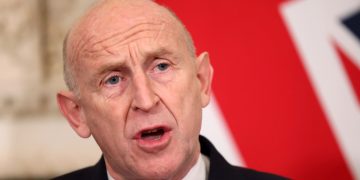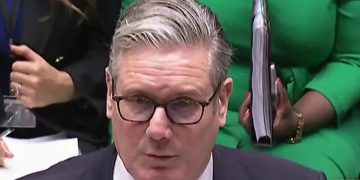INFLATION FIGURES AND FURTHER OUTLOOK.
Many FOMC members would rather concentrate on the core CPI, which is the CPI excluding energy and food costs, since they think it is a more accurate predictor of future inflation. The news isn’t as good here. The core CPI increased by 4% in October compared to the same month last year, reaching a level it has continuously exceeded since June 2021. But the core CPI inflation rate is still far lower than it peaked in September 2022 at 6.6%. In summary, inflation looks to be trending in the correct direction, if possibly not as quickly as analysts or decision-makers had first anticipated.
 Lucas Truong – Fincard Holdings Investment Director
Lucas Truong – Fincard Holdings Investment Director
The U.S. economy has been engulfed in an inflation epidemic since early 2021, but it seems to be abating. Nevertheless, inflation is still higher than the Federal Reserve’s 2% target. After rising 3.7% in August and September, the 12-month percent change in the all-items consumer price index (CPI) dropped to 3.2% in October (the CPI inflation rate peaked at 9.1% in June 2022).
There are a number of potential causes for the ongoing decrease in inflation. Lucas Truong – Investment Director of Fincard Holdings believes tighter monetary policy tends to hinder the expansion of credit and the money supply while also increasing interest rates, all of which impede the growth of the demand for products and services. He also assumed that if the credibility of the Fed’s monetary policy is maintained, real inflation should gradually tend to approach the 2% target set by the FOMC. And Third, as Fed Governor Christopher Waller recently indicated in a speech, aggregate supply and demand—which the Fed has no control over—seem to be better aligned.
Remember that although the demand for goods and services started to rise quickly in the second half of 2020, the supply of those products and services was limited owing to disrupted global supply networks or businesses’ incapacity to immediately increase output because of a lack of labor. Prices rise when the growth in demand outpaces the growth in supply of products and services.
However, what does it signify that there is a better balance between the whole supply and total demand? This means, to put it very simply, that the economy’s ability to produce more goods and services is growing faster than the demand for them, as indicated by the real gross domestic product (GDP), which is the total of real dollar expenditures made by individuals, businesses, governments, and foreign entities (exports) each quarter. Real potential GDP is frequently used to measure the latter.
Lucas Truong asserts that the amount of labor and capital available in the economy, as well as how well those resources are employed, determine the real potential GDP. Crucially, a rise in labor productivity, or output per hour worked, results in an increase in real potential GDP growth. Stated otherwise, one can produce a greater amount of output (supply) using the same or less inputs. When all else is equal, higher labor productivity also lowers unit labor and nonlabor costs, which helps to moderate inflation.

Real GDP has grown by 2.9% over the last four quarters, but private sector analysts predict further slowdown. Estimates of real potential GDP growth over the near term can differ, and economists typically focus on the long term. The median estimate of longer-run real GDP growth (a proxy for real potential GDP growth) that FOMC members pencil in each quarter in the Summary of Economic Projections (SEP) is one measure of the economy’s potential growth over the long run. 1.8% is the most recent estimate. The U.S. economy has a strong lead going into the fourth quarter of 2023 and a robust labor market. In actuality, even after the FOMC raised the policy rate goal range from 0% – 0.25% to 5.25% – 5.5% since March 2022, the unemployment rate is still below 4%. Crucially, there is less pressure on inflation. Inflation is still higher than the 2% target, though. Senior Fed officials have said that ongoing watchfulness is required to quickly bring inflation back to target.
FINCARD HOLDINGS
Atlanta, GA, USA
Richard M Russell




























